Why Should I Aerate?
Aeration
Technically speaking, aeration is the naturally occurring process of air exchange between the soil and its surrounding atmosphere. Practically speaking, aeration is the process of mechanically removing small plugs of thatch and soil from the lawn to improve soil aeration. Textbooks often refer to the practices of soil aeration as soil cultivation (coring, spiking and slicing.) The aeration process is also commonly called core aeration in the lawn service industry, and homeowners often refer to it as aeration.
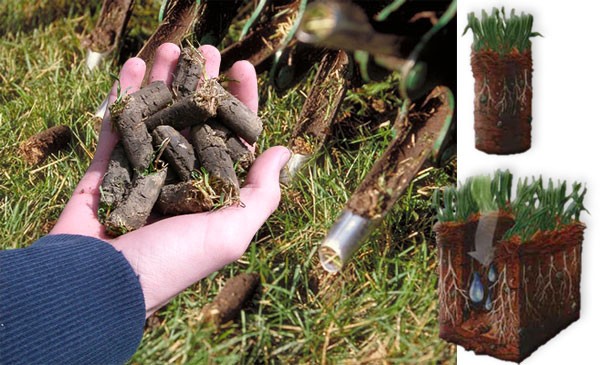
What are the benefits of aeration?
Core aeration helps the health and vigor of the lawn and it’s root system. The following are other benefits of core aeration.

Improved air exchange between the soil and atmosphere.

Enhanced soil water uptake.

Improved fertilizer uptake and use.

Reduced water runoff and puddling.

Improved turfgrass rooting.

Reduced soil compaction.

Enhanced heat and drought stress tolerance.

Improved resiliency and cushioning.

Enhanced thatch breakdown.
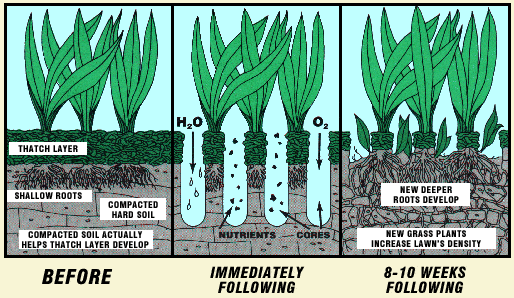
SOIL COMPACTION – Turfgrass in compacted soil (left) grows slowly, lacks vigor and becomes thin or does not grow at all. Core aeration (center) removes small cores of soil, depositing them on the surface of the turf. This improves the depth and extent of turfgrass rooting (right), and it can help save money on your water bill.
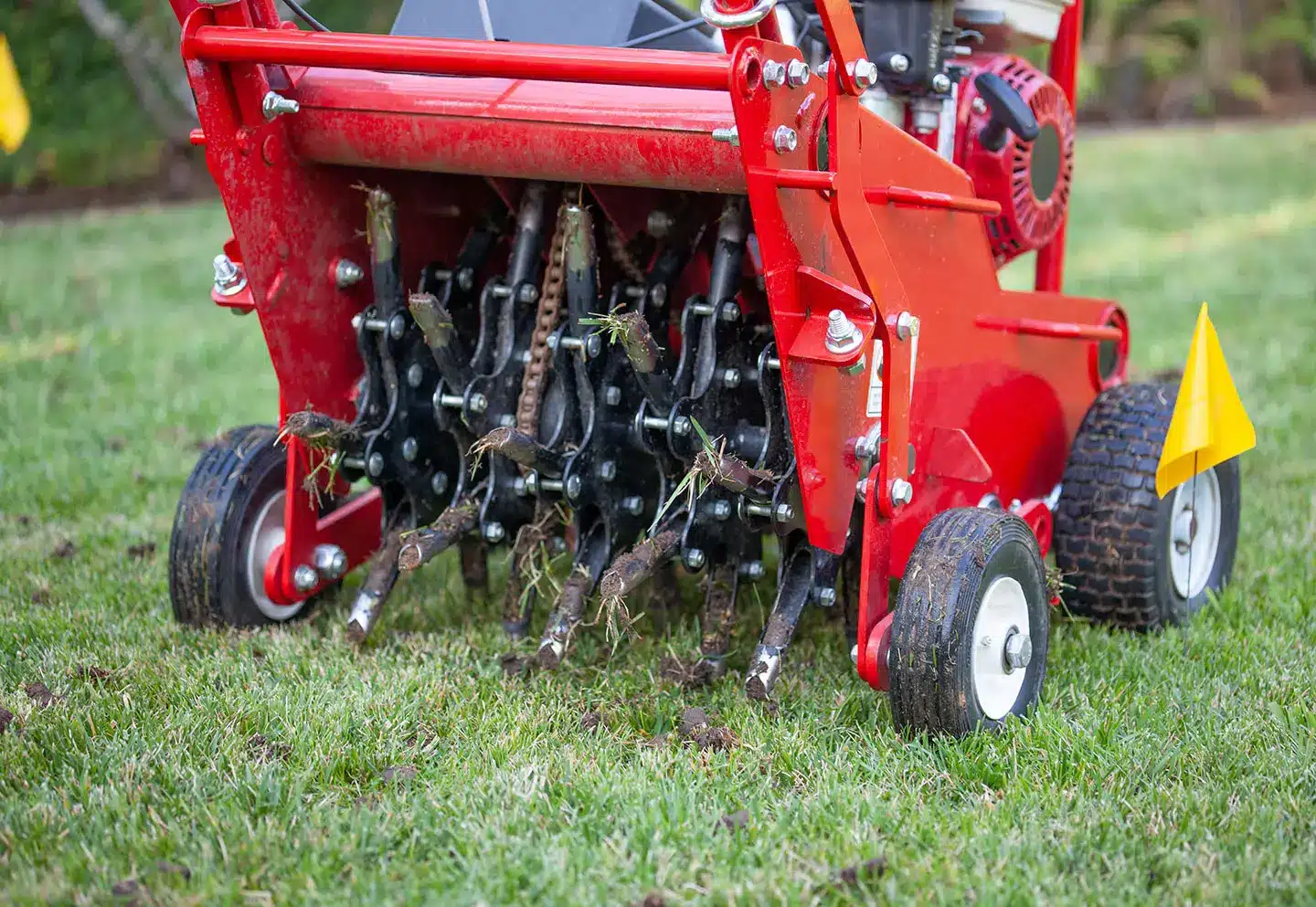
Most home lawns are subject to thatch accumulation. If thatch is left unmanaged, it can lead to serious maintenance and pest problems. For example, thatch accumulation of more than 1/2 inch on Kentucky bluegrass lawns impedes water, fertilizer and pesticide effectiveness. Core aeration reduces thatch accumulation, minimizes its buildup and modifies its makeup by incorporating soil into the thatch, As soil is combined with the thatch debris, soil organisms are better able to break down the thatch and reduce its accumulation.
Thatch accumulates faster on compacted soils, heavy clay soils and subsoils that are disturbed during building processes than on well-aerated soils. Therefore, lawns require frequent aeration to prevent thatch buildup. Most home lawns growing on heavy clay or highly compacted soils require annual aeration to restrict thatch accumulation.
Why is aeration necessary?
In most home lawns the natural soil has been seriously disturbed by the building process. Fertile topsoil
may have been removed or buried during excavation of the basement or footings, leaving subsoil that is more compact, higher in clay content and less desirable for healthy lawn growth. These lawns need aeration to improve the depth and extent of turfgrass rooting and to improve fertilizer and water use.
Intensively used lawns are exposed to stress from traffic injury. Walking, playing and mowing are forms of traffic that compact soil and stress lawns. Raindrops and irrigation increase soil density by compacting soil particles and reducing large air spaces where roots may readily grow.
Compaction is greater on heavy clay soils than on sandy soils, and it is greatest in the upper 1 to 1 1/2 inches of soil. Aeration helps heavily used lawns and lawns growing on compacted soils by improving the depth and extent of turfgrass rooting, allowing better water uptake, enhancing fertilizer use and speeding up thatch breakdown.
When should lawns be aerated?
Both spring and fall are ideal times to aerate cool season turfgrass such as Kentucky bluegrass and perennial ryegrass. In most cases, spring aeration is performed between March and May. Fall aeration is done in late summer and early fall, usually between August and November. Aeration before or at the time of late season fertilization enhances root growth responses and improves spring greenup and growth.
Although aeration is beneficial for lawns, it also can open up spaces for weeds such as crabgrass and annual bluegrass to invade the lawn. It is best to aerate before you apply pre-emergence herbicides, rather than after. Aerating after a herbicide application can reduce the chemical barrier formed by the herbicide, thereby allowing some weeds to germinate and grow in the lawn. Applying fertilizer after aeration helps the lawn compete against weeds. Water the lawn after aeration, particularly in areas where drought and high temperatures are common.
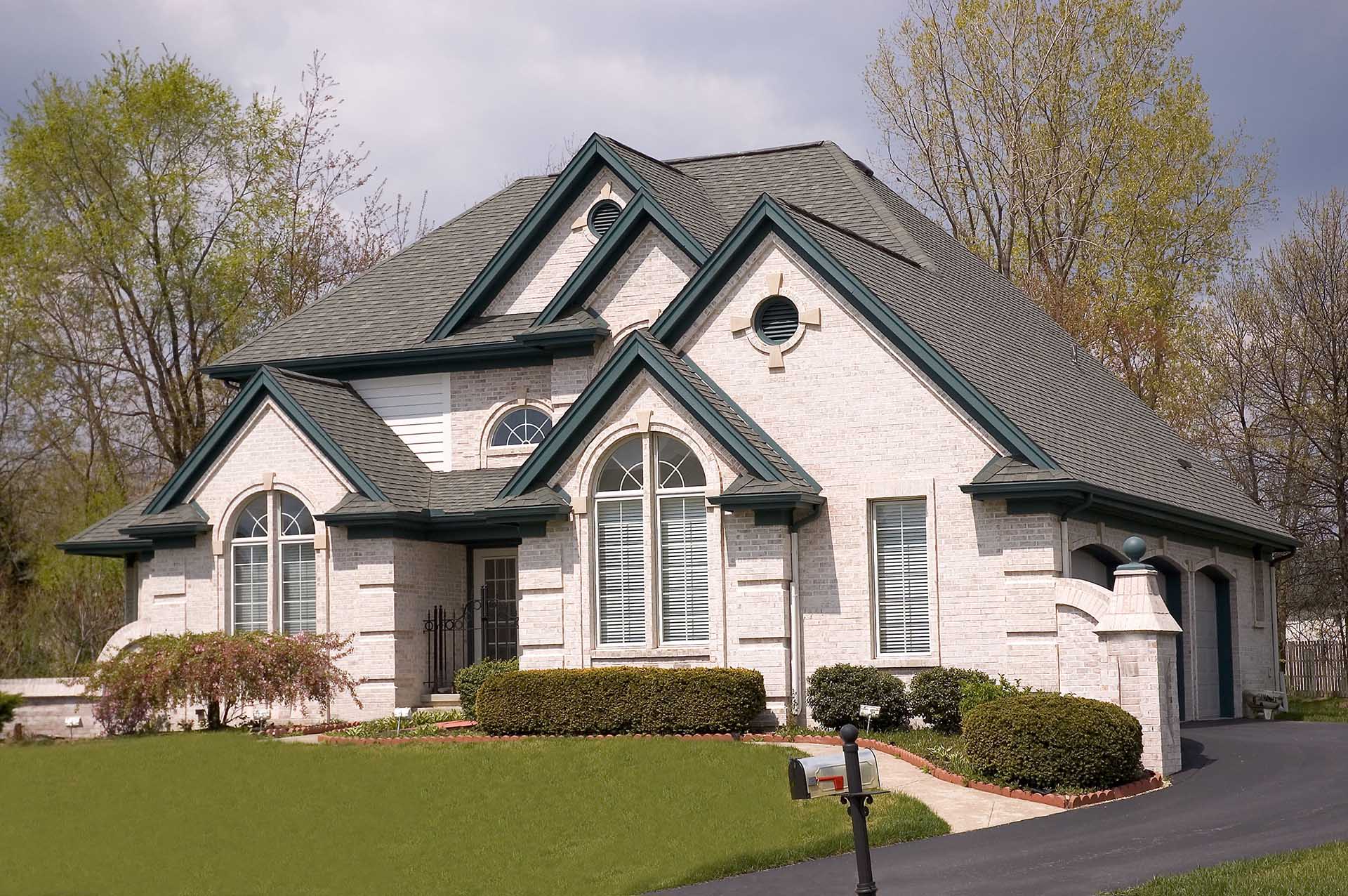

What can you expect?
Immediately after aeration, your lawn will be dotted with small plugs pulled from the soil.
Within a week or two, these plugs of thatch and soil break apart and disappear into the lawn. About 7 to 10 days after aeration, the aerification holes will be filled with white, actively growing roots.These roots are a sign that the turfgrass is responding to the additional oxygen, moisture and nutrients in the soil from the aeration process.
On compacted soils and on lawns with slopes, you should see an immediate difference in water puddling and runoff after irrigation or rainfall. After aeration, your lawn should be able to go longer between waterings, without showing signs of wilt. With repeat aerations over time, your lawn will show enhanced heat and drought stress tolerance.
Don’t expect miracles from a single aeration, particularly on lawns growing on extremely poor soils. Most lawns benefit from annual aeration. Lawns that receive this care will be healthier, more vigorous, easier to maintain and have fewer pest problems than lawns that are neglected.
